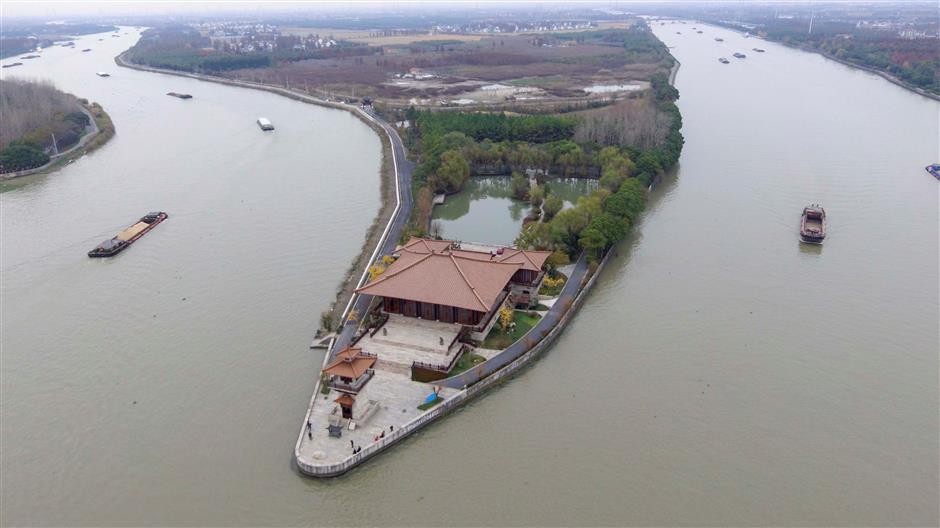Small beginning for mighty Huangpu
The Huangpu River has nurtured Shanghai for centuries. However, few people know that the city’s mother river originates in a small village tucked away in Shihudang Town, in the south of Songjiang District.
Drive along Minta Road to the west and turning onto a country road, one would marvel at the scene that unfolds ahead — open water suddenly emerges from the horizon, glinting in the winter sun.
The Yuanxiejing and Xietangjiang rivers merge at the junction of Litahui and Wushe towns, and run to meet Hengliaojing River in the east, officially the “Origin of Huangpu River” with a giant rock carved with a large red number zero to mark the starting point.
A lighthouse stands at the rivers’ intersection, aiding navigation of the three channels from Shanghai to Suzhou in Jiangsu Province, and Hangzhou and Huzhou in Zhejiang Province.
Dongxia Village, the point of origin, was a busy trading hub in ancient China, joined by various waterways with Huangpu River the largest.
The river, about 113 kilometers long, formed in 1522, running from Songjiang through 11 districts into the Yangtze at Wusong Mouth, Baoshan. Over the centuries, the Huangpu cradled Shanghai’s agriculture, irrigating the soil, providing fishing, carrying off effluent, discharging floodwaters, serving as the city’s main shipping route and offering citizens drinking water.
There is a small park commemorating the river’s origin, featuring stone bridges, kiosks and green plants. Chunshen Hall, in the architectural style of Tang Dynasty (618-907), is the exhibition center, which displays the river’s history and development. The hall, safeguarded by two stone lions from the Ming Dynasty (1368-1644), is also a shrine to the memory of Chunshen King Huang Xie (314-238 BC), who managed the fief throughout Wuyue (today’s Yangtze River Delta region).
Legend has it that Huang led his men to control water and prevent floods in Songjiang during his reign. He dredged a channel that started from Taihu Lake in Jiangsu Province, past old Jiaxing, Fengjing and Songjiang cities, and ran to the South River that met the sea in the south. People later renamed the South River the Huangpu or Chunshen river to remember the king, and his fief Shanghai is also called “Shen” today.
A few steps from the hall by the river, there is a tower of the Dragon King, god of water in Chinese mythology said to have the power to harness floods. Locals built the temple and enshrined a golden dragon king statue, praying for a safe voyage each time they set out fishing.
Dusk might be the best time to visit, when the river returns to peace. The water surface gleams gold in the setting sun, and the lighthouse’s beam is quite distinct in the gathering dusk.
Address: Minta Road, Dongxia Village, Shihudang Town
How to get there:
G50 (Shanghai-Chongqing Highway) — G1501 (Shanghai Circle Highway) — Minta Road
G15 Shenhai Highway — G60 (Shanghai-Kunming Highway) - G1501 (Shanghai Circle Highway) — Minta Road

















